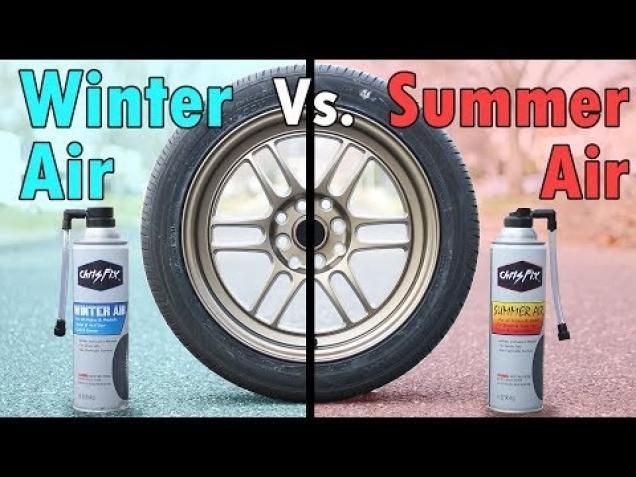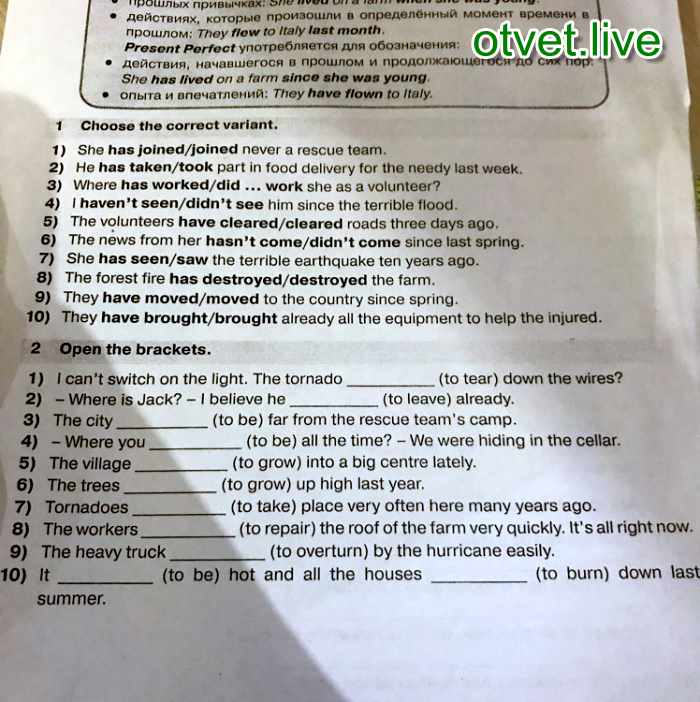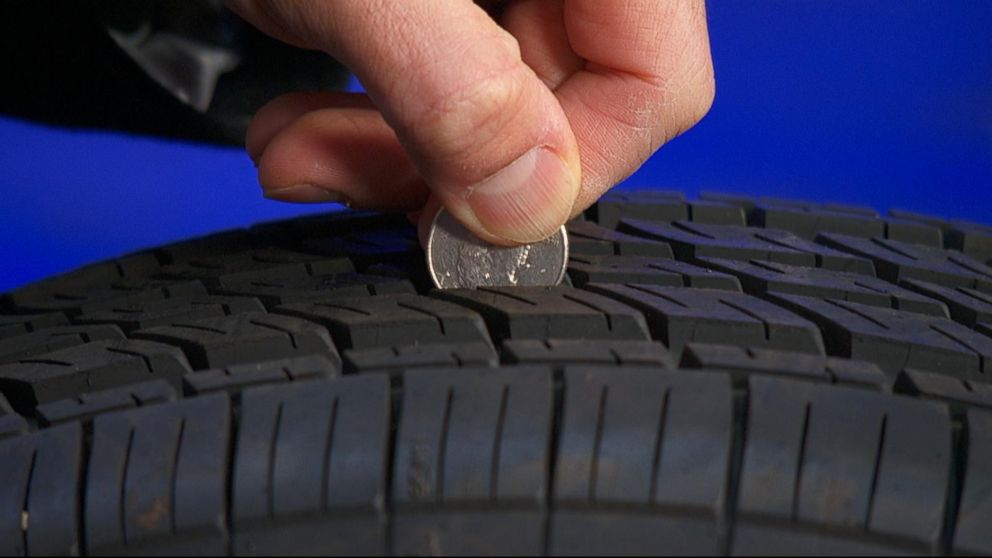Many drivers wonder if they can replace nitrogen with regular air in their tires. While looking for a way to keep tires inflated longer, especially in changing temperatures, some consider inflating them with nitrogen instead of air, or using a combination of the two. This guide can help you decide whether to fill your tires with nitrogen, air, or both.
In general, adding nitrogen to your tires is a typical up-sell tactic at tire shops. There are some benefits in motorsport, and it sounds good in theory, but for the typical car owner, sticking with normal air is perfectly fine. As long as you keep your tire pressures at the correct spec, you're good to go.
Nitrogen tires are filled with nitrogen instead of, or in addition to, regular air. The larger, slower-moving nitrogen molecules seep out of the tire more slowly, and some experts say this can help keep tires inflated longer. Using a combination of nitrogen and air in your tires won't harm them, but it might reduce the effectiveness of the nitrogen fill and cause your tires to deflate more quickly than if you used pure nitrogen. An accurate pressure gauge can help you maintain proper tire pressure, whether using nitrogen or air.
Filling your tires with nitrogen might provide benefits in these areas:

Any tire can be filled with nitrogen instead of air. Here are some considerations when using nitrogen in some common tire types:
Summer TiresStandard summer tires perform well in dry and wet conditions. They often perform best in summer weather or weather that is generally warm and dry. Using nitrogen in your summer tires might help you keep a consistent tire pressure when the temperature changes drastically, such as a cool summer night followed by a very hot day.
Snow TiresSnow tires, or winter tires, use special rubber and tread and sometimes even metal studs to handle wintry conditions such as snow and ice. Nitrogen's extreme weather benefits may be useful in cold conditions, and you might find that you lose less tire pressure during weather fluctuations than if you were to use nitrogen-free air.
All-Season TiresAll-season tires are a safe bet in areas with relatively moderate conditions, including temperate winters. They offer modest traction and don't need to be replaced seasonally. Filling your all-season tires with nitrogen might help you retain tire pressure through seasonal temperature shifts, especially when the seasons change.
They offer modest traction and don't need to be replaced seasonally. Filling your all-season tires with nitrogen might help you retain tire pressure through seasonal temperature shifts, especially when the seasons change.
Performance tires are often used for high-speed or luxury vehicles. They are often a low-profile, wide tire with shallow treads and increased traction in some conditions. Nitrogen offers the same benefits in performance tires as it does in other tire types, including less frequent top-offs.
Off-Road TiresOff-road tires are used for vehicles that can handle rough conditions such as rocks, mud, and deep snow. They are usually durable with deep tread. Using nitrogen in your off-road tires might help you control your tire pressure specifically for the conditions you expect out on the terrain.
Things to Think About when Considering Nitrogen for Your TiresWhen you are deciding whether to use nitrogen in your tires, keep these factors in mind:
 Most locations charge to fill your tires with nitrogen. You might also purchase tires that come pre-filled with nitrogen. Research nitrogen tire fill costs in your area and consider the expense before purchasing your tires. Remember that you might not have to refill your tires as often when you use nitrogen compared to air.
Most locations charge to fill your tires with nitrogen. You might also purchase tires that come pre-filled with nitrogen. Research nitrogen tire fill costs in your area and consider the expense before purchasing your tires. Remember that you might not have to refill your tires as often when you use nitrogen compared to air. Ease of access might impact your decision to fill your tires with nitrogen, especially if you prefer to avoid mixing nitrogen and air to preserve the full benefits of nitrogen tires. If you plan to travel, you might consider researching nitrogen dealers in locations you plan to visit, particularly if you need to fill your tires while you are away.
Ease of access might impact your decision to fill your tires with nitrogen, especially if you prefer to avoid mixing nitrogen and air to preserve the full benefits of nitrogen tires. If you plan to travel, you might consider researching nitrogen dealers in locations you plan to visit, particularly if you need to fill your tires while you are away.Your local tire dealer can help you fill your tires with nitrogen for the first time. They will usually remove the regular air from your tires and then refill them with nitrogen multiple times. This helps eliminate any remaining oxygen and moisture inside.
To top off or refill your tires with nitrogen, visit a dealer or tire shop near you. Some retailers may only fill tires that were purchased from them and others might require a membership.
If you find that you are in a situation that calls for a top-off or reinflation and you are away from a nitrogen dealer, use whichever source of air you can find. Maintaining proper tire pressure is more important than the composition of the air in the tire. Properly inflated tires handle better, may get better gas mileage, wear more evenly, and can help keep you safer on the road. You can always return to a dealer for a full nitrogen fill when you get to another area.
Maintaining proper tire pressure is more important than the composition of the air in the tire. Properly inflated tires handle better, may get better gas mileage, wear more evenly, and can help keep you safer on the road. You can always return to a dealer for a full nitrogen fill when you get to another area.
Make sure to verify the correct tire size for your vehicle.
Hearst Autos Gear Team The Hearst Autos Gear Team is dedicated to bringing you the very best in automotive tools, parts, and accessories, based on the expertise of the editors of Car and Driver, Road & Track, and Autoweek.
Properly inflated tires are crucial for your vehicle's safe and functional performance. However, there are different ways you can bring them to the correct psi. Apart from compressed air-filled tires, you can also have your tires filled with nitrogen.
Apart from compressed air-filled tires, you can also have your tires filled with nitrogen.
But, why is putting nitrogen in tires so popular? Let's look at everything you need to know! This is your guide to nitrogen tires!
Basically, nitrogen tires are filled with pure nitrogen, instead of or in addition to air. Adding dry nitrogen to your tires comes with multiple benefits. Furthermore, when you see green caps on tires, it usually means that they are inflated with N2.
What else do you need to know? A lot.
However, first, let's talk about the science of nitrogen in tires.
Tires with nitrogen in them offer some benefits. But, how is this achieved?
All tires are prone to heat build-up during their everyday driving, which leads to minimal air pressure loss. It is normal for tires to lose 1-2 psi/month from regular driving. This is because temperature changes affect tire pressure in the long run. So, how is this possible?
When temperature rises, air pressure expands. This causes it to push against the tire. As tires are not completely airtight, they will let minimal pressure escape, reducing psi levels in the process. This is where tires filled with nitrogen help.
This causes it to push against the tire. As tires are not completely airtight, they will let minimal pressure escape, reducing psi levels in the process. This is where tires filled with nitrogen help.
N2 has larger, slow-moving molecules. Therefore, nitrogen-inflated tires decrease the amount of psi leaving the tires during their regular performance, as this gas takes longer to expand. For this reason, they are able to handle higher temperature conditions and more driving pressure than regular tires.
What else do nitrogen-filled tires offer? Let's discuss the pros and cons of nitrogen in tires. Why use nitrogen in tires?
Topping proper tire pressure levels with nitrogen will help significantly decrease the possibility of wheel corrosion. This is because N2 is a dry gas and these nitrogen molecules reduce moisture inside the tire.
Therefore, nitrogen helps prevent wheel rusting better than dry air does. Moisture inside the tire causes rust to form on the rim, which will ruin its performance and durability.
By avoiding moisture build-up inside the tires, nitrogen also helps to prevent dry rot. Dry rot happens when the tire loses its oils but can be accelerated by moisture trapped inside the tire.
Tire wear is also optimized in this manner. Temperature changes do not create pressure accumulation, which ensures slow and even wear as the tire is kept cool. This promotes a longer tire life.
A tire filled with nitrogen loses air pressure slower, lowering the possibility of the vehicle driving on underinflated tires. It avoids irregular and premature treadwear. However, you can also prevent this issue by checking inflation pressure levels regularly, even when they are nitrogen-fill tires.
Tire air loss is normal. But, there is a difference between nitrogen and compressed air tires. You will need a nitrogen refill later, as N2 molecules move slower. When they warm up, minimal tire pressures leave car tires through their rubber.
Tires with nitrogen in them lose less psi throughout the month. However, the difference over a year is not enough to justify filling everyday tires with nitrogen.
Rolling resistance can also be affected. Pressure build-up along the rubber increases rolling resistance, which ruins the vehicle's fuel efficiency.
Since nitrogen tires prevent heat accumulation, they offer better fuel economy for a longer period of time. To ensure the longevity of this benefit, proper tire pressure levels need to be maintained. This includes regular tire maintenance.
When it comes to N2 vs. air tires, the difference for everyday driving is minimal.
Generally speaking, psi levels decrease during the tire's regular use. Air-filled tires lose about 1-2 psi/month. With nitrogen-filled tires, that loss is lower. The problem is that in the long run, over the course of a year, that difference is minimal - about 1. 3 psi.
3 psi.
Additionally, when you fill your tires with compressed air, you are also adding nitrogen. Air consists of 79% of nitrogen and only 21% of oxygen. This N2 level is enough for it to protect the tire and provide benefits. For everyday drivers and commuters more is not necessary.
Can you fill green cap tires with air? Yes, because air has nitrogen in it as well.
The benefits of nitrogen tires are minuscule in everyday conditions. For such drivers, spending extra at the nitrogen fill stations is not worth it.
But, if this is true then why is nitrogen used in tires?
Nitrogen-filled tires offer exceptional performance for racing vehicles! Let's talk about it in the next section.
Tire pressure increases as the tires get hot, which quickly happens during their racing applications. Racing vehicles equipped with nitrogen tires perform better. Nitrogen in the tires keeps them cool and prevents heat accumulation throughout the performance. As a result, they will guarantee safer high-speed durability.
As a result, they will guarantee safer high-speed durability.
On the other hand, if you don't own a racing car but really want nitrogen-filled tires, don't let us stop you. If you get a new car, have the cash to spend on tire maintenance, and live near nitrogen refill stations, go for it.
Checking tire pressure levels often is important. No matter whether you have air- or nitrogen-filled tires on your vehicle, regular air pressure inspections will make sure the tire's lifespan is not shortened.
There is a myth about nitrogen-filled tires not needing refills. That is not true. While their pressure loss is slower, vehicle owners will still need to add pressure to the tires every other month (approximately).
Not following through with this will increase treadwear, ruin fuel economy, cause loss of traction, and damage its controllability.
How to fill tires with nitrogen? You visit a tire shop!
The best practice is to have nitrogen tires installed, refilled, deflated, etc. at your local tire shop. Before filling tires with nitrogen, the air in them will need to be removed. For this reason, getting professional help would be ideal.
at your local tire shop. Before filling tires with nitrogen, the air in them will need to be removed. For this reason, getting professional help would be ideal.
Ideally, you will also go back to the same place to refill the tires with N2. However, if the TPMS lights up, do not wait - mixing air and N2 is better than driving on underinflated tires.
Sadly, most of us cannot fill tires with nitrogen at home.
Purchasing a new vehicle with nitrogen-filled tires will be between $70-$180. On the other hand, if you wish to have the tires filled with N2 later since they will need to deflate them, it will be about $30/tire. Refills are cheaper, as they are around $5-$7/tire. However, this is needed every 2-3 months.
The simple answer: Yes, you can.
However, let us explain! How can you put air in nitrogen tires?
Air consists of various gasses. It mainly has nitrogen and oxygen in it. More precisely, air contains 79% nitrogen and 21% oxygen.
More precisely, air contains 79% nitrogen and 21% oxygen.
Therefore, if tires are inflated with air, instead of tire nitrogen, we will just dilute the nitrogen levels in the tire. Doing this, will not cause any issues as tires inflated in such a manner will still maintain their consistent pressure.
Yes, mixing nitrogen and air in tires is possible. Air is made up of 79% nitrogen and 21% oxygen. Therefore, when you add regular air to nitrogen tires, you will just dilute the nitrogen inside the tires.
You need to check the psi for nitrogen-filled tires the same way as you do with regular air-filled tires. To do it, you need a tire pressure gauge that tells you the psi levels currently in the tire. Take off the valve stem, place the gauge on it, and the pressure inside the tire will show up on the display.
Generally speaking, you will be able to find local tire shops that offer this service. A nitrogen tire fill will cost you about $30 per tire, but it depends on the tire garage you visit.
A nitrogen tire fill will cost you about $30 per tire, but it depends on the tire garage you visit.
What is better - free air or "magic" nitrogen in tires? There are a lot of opinions. Those who pumped nitrogen into tires instead of air recommend that their acquaintances and friends do the same. Many have heard that Formula 1 cars use nitrogen to inflate tires. Yes that there "Formula 1"! Aircraft tires, heavy trucks and supercars also contain nitrogen. Opinions were divided.
What are the advantages of nitrogen over oxygen in tires, is there any difference at all, or is it a banal pumping out of money? “Sellers of air” name such pluses:
| - stable pressure in tires, as a result of which wear is reduced; - smooth running of the car; - good road grip; - in the event of a tire puncture, the leakage rate is less; - regardless of the temperature in the tire constant pressure; - good fuel economy. |
|
At first glance, for little money, how many useful and important properties at once! Modern car owners love all sorts of exotic things, like miracle powders, wiper spoilers that supposedly improve aerodynamics, etc. They also seized on this "innovation" with nitrogen in tires.
If you recall the physics from the school course, it is clear that "air" consists of 78% nitrogen, 21% oxygen, 1% carbon dioxide and other gases. And the mixture advertised by tire fitters consists of 95% nitrogen and 5% oxygen.
« Stable tire pressure. Since the coefficient of thermal expansion of nitrogen is lower than that of air, the effect of ambient temperature on the tire has practically no effect on the pressure inside it. Nitrogen does not expand at all, unlike air. Therefore, it is nitrogen that is ideal for pumping into tires. »
nine0002 However, anyone with even a little knowledge of physics understands that the statement that the pressure of a gas in an enclosed space is independent of temperature conflicts with the laws of Gay-Lussac (for any gases, the volume expansion coefficient is the same) and Charles (the pressure ratio to temperature is a constant value). We can conclude: all statements that nitrogen will behave differently than oxygen, with an increase or decrease in temperature, are real inventions that are designed for an uneducated person. Of course, there is still a small difference in the volume expansion coefficient, but it is only 0.0001. nine0003 We can conclude: all statements that nitrogen will behave differently than oxygen, with an increase or decrease in temperature, are real inventions that are designed for an uneducated person. Of course, there is still a small difference in the volume expansion coefficient, but it is only 0.0001. nine0003 |
Accordingly, the change in tire pressure will be about 0.00025 atm. Is this a significant change? Certainly not. For those who do not believe in science, we can advise you to conduct a small experiment on your own: pump one tire with nitrogen, and the other with air, and alternately immerse it in boiling water, then in ice water. It is unlikely that the pressure will be stable.
« A tire filled with nitrogen never deflates. Nitrogen molecules are very large, much larger than oxygen, and they move extremely slowly through the micropores in rubber. nine0046 »
| Again we turn to physics. |
Perhaps the whole secret is that “large” nitrogen molecules seem to clog the micropores of the tire and do not allow molecules of other gases to pass out? Although the mixture advertised by the sellers contains 16-17% more nitrogen than ordinary air
« The possibility of tire explosion is minimal. Because nitrogen is an inert gas and does not support combustion. At high speeds, the tire does not heat up because there is no combustible oxygen in it. »
| So, let's try to understand all this.
|
A normal tire for a passenger car can withstand pressure up to 9atm. In order for a tire to burst, it must be heated to a temperature of at least 1000 ° C. At this temperature, even a steel disk will melt.
« Fuel economy. A wheel filled with nitrogen is lighter in weight than a wheel filled with air. Accordingly, the load on the suspension is less and fuel consumption is reduced. »
| At first glance, everything is logical. But let's calculate what is the difference in the mass of wheels pumped up with nitrogen and air. |
This means that the nitrogen content in this tire will be 0.0750 kg, and air - 0.0774 kg. That's the whole difference! You just need a jewelry scale to catch such a difference in weight. Naturally, there can be no talk of any difference in weight and fuel economy. nine0003
« Delayed tire aging due to the absence of dust, moisture and oil in nitrogen. This is confirmed by tests conducted by Continental, Bridgestone, Michelin. »
| If you think about it, the impact of the environment (various reagents on the road surface, ultraviolet radiation, bitumen, etc.
|
Is it really possible to save the carcass of tires from oxidation by ordering nitrogen into the tire, as the “air sellers” promise? This is hard to believe, since it is well hidden in the thickness of the rubber and cannot come into contact with air, moreover, the wires of the frame are covered with brass and are not easily oxidized.
« Improving road grip. Nitrogen is more stable than air (which is able to succumb to the environment) . »
| This myth is generally difficult to somehow comment on. There is nothing to discuss, no matter how you look at it. nine0003 |
On the other hand, cunning sellers sometimes deliberately underfill the tires with nitrogen and warn the client not to inflate the tires with air in any case, and also not to check the pressure.
So nitrogen in tires, instead of ordinary air, is not an innovation at all, but rather a tribute to fashion, which is usually not consulted with science. On the other hand, the small money that is given to the “air sellers” for nitrogen may well be compensated by the impression made on friends when saying the phrase: “And in my car there are nitrogen tires, like Schumacher’s!”. nine0003
Friday, November 11, 2016 12:13:25 pm Europe/Moscow
When you go to the tire shop again, you may be offered to fill the tires with nitrogen, promising a slight improvement or not all characteristics of the car. But is there any real benefit from this procedure?
But is there any real benefit from this procedure?
Nitrogen is an inert gas and one of the most abundant elements on Earth. And since ordinary air already contains 78% nitrogen, then, in fact, nitrogen is dry air without oxygen .
This technology may have come from aviation and motorsport. On modern aircraft, tubeless tires are sometimes inflated with technical nitrogen, and its use is due to the prevention of gas condensation, which can freeze at high altitude and interfere with further landing of the aircraft.
Also, since nitrogen is a non-flammable gas, for fire safety purposes, it was also used to inflate the tires of Formula 1 cars. nine0003
This information is confirmed by a Michelin specialist:
“All MICHELIN tires are designed to deliver the expected performance when inflated with air, provided the manufacturer's recommended pressure is maintained. However, in certain cases the use of nitrogen may be recommended.
However, in certain cases the use of nitrogen may be recommended.
For car tires, nitrogen is recommended when the tire is used in particularly difficult conditions and/or when it is necessary to reduce the effects of potential overheating of the wheel, such as oversized tires, aircraft tires and auto racing .
For all other tires that are used normally, nitrogen inflation is not necessary and will not necessarily bring the expected benefits of . The physical properties of nitrogen make it possible to slightly reduce pressure loss due to the natural permeability of tire materials, so the use of nitrogen helps the driver maintain pressure.”
Theoretically, the physical properties of nitrogen should slightly reduce the natural loss of pressure in the tire, however, air leakage will occur in any case, no matter what gas the tire is inflated with: air will escape through the mating surface of the tire and the wheel rim, through the nipple or its attachment to disk.